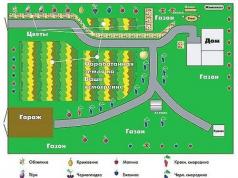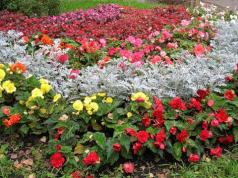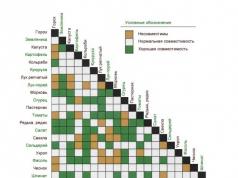2012-06-02
Raspberry-blackberry hybrids are a rare, but very promising crop for a backyard economy. From blackberries, they inherit high productivity, unpretentiousness to the soil and cultivation conditions. From raspberries - greater winter hardiness and relative stiffness of the stems.
By yield and size of berries raspberry-blackberry hybrids are far ahead. The fruits are juicy and delicious. They, as well as the leaves, contain a large amount of vitamins (C, B3, B1, B2, Bg, E, K, PP) and trace elements (iron, manganese, phosphorus, magnesium, copper). Berries are rich in carbohydrates, malic and citric acids.
Expanded polystyrene is a common building material with high thermal insulation qualities, water resistance and not heavy weight. It is sometimes used for wall insulation, ceilings, floors. But in order for it to hold perfectly, it is important to know how to glue the expanded polystyrene together, or rather what kind of glue will be effective for this material. By the way, if you are interested in foam glue, go to the site dnepr.kub.in.ua.
Agrotechnics of ezhemalina
Caring for raspberries is in many ways similar to growing raspberries. The site should be sunny, protected from cold winds. When planting, you should not fill the pit with organic fertilizers (compost, manure). Enhanced shoot growth and increased yield in the first year can lead to complete freezing of plants in winter. It is better to start feeding with solutions of mullein and poultry droppings two years after planting. The distance between plants is 0.7-1 m, row spacing is 1.5-2 m. After planting, the seedlings are shortened to 25 cm, watered, mulched. Raspberry-blackberry hybrids form whips (2-4 m), creeping along the ground, which it is desirable to fix. To do this, set a height of about 1.5 m along the row. For the winter, the plants are removed from the supports, the branches are laid and insulated with peat, sawdust, branches, leaves, straw, and so on. With a sufficient layer of snow, it is normal
hibernates without shelter.
benefit
- A decoction of the leaves and fruits of ezemalina is used as a diaphoretic.
- Ripe fruits are a mild laxative, while unripe berries, on the contrary, have a fastening effect.
- Ezhemalina strengthens capillaries, has anti-sclerotic and anti-inflammatory effects.
- The large amount of calcium makes the berries invaluable for people suffering from joint diseases.
Pruning and shaping jemalina
Annual pruning is required to increase productivity. At the end of May - the first half of June, the tops of shoots 1-1.2 m high are cut off by 10-15 cm. This promotes branching. In the second half of summer, the fruiting branches are cut out completely. At the same time, the bush is thinned out, leaving 8-9 shoots. In the spring, re-thinning is carried out, leaving 4-6 of the strongest. Plants begin to bear fruit in the 2nd year of life.
FACT: ONE OF THE FIRST RASPBERRY-BLACKBERRY HYBRIDS WAS OBTAINED IN 1883 IN THE USA AND CALLED THE LOGAN'S BLACKBERRY. OTHER NAMES - LOGANOVA BERRY, OR LOGANBERRY.

Diseases and pests of Yezhemalina
For all its resistance to diseases and pests, it is slightly susceptible to some of them (anthracnose, raspberry beetle, raspberry-strawberry weevil, raspberry stem gall midge). This is most often due to the presence of raspberry genes in some varieties.
Ezhemalina: 4 secrets
1. Mulching
In late April - early May, the soil under the bushes is covered with corrugated cardboard from old boxes. On top I pour a mixture of rotten sawdust with ash, dry mullein, weed weeds. The thickness of the mulch is 8-15 cm. In a year, mulch turns into an excellent fertilizer. Cardboard also inhibits the growth of weeds.
2. Tapestry
I make it according to the grape model: one-plane, 2.2 m high. Between the supports I pull five rows of wire or thick nylon fishing line. I tie up shoots to them: those that will bear fruit - "snake" in the upper rows. The rest are on the lower ones. If you tie the yogurt to a stake, there will be little benefit from this. The bush thickens, the berry becomes smaller. And if you grow it without a garter, then in a couple of years the plant will fill the summer cottage.
3. Cropping
Many gardeners recommend pruning jemalins in late fall or early spring. I noticed that the best time for this is the end of fruiting.
4. Care
For good development and fruiting, the yogurt needs to be fed, and in the absence of precipitation, watered. Mulch provides the plant with all nutrients except nitrogen. Therefore, in the first half of summer I bring in urea, infusions of nettle or fresh manure.
Vitaly Zagalylo
Raspberries. Video
- See on topic
- Tell your friends








